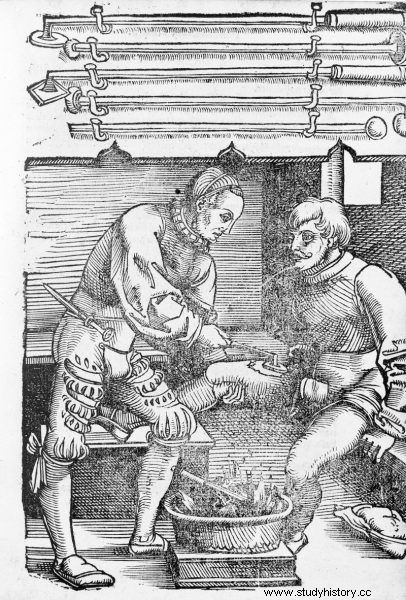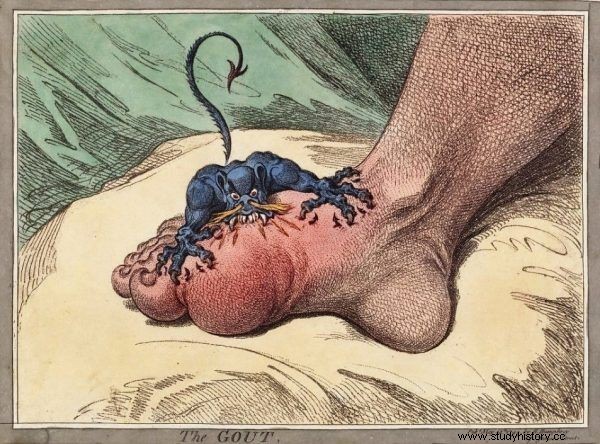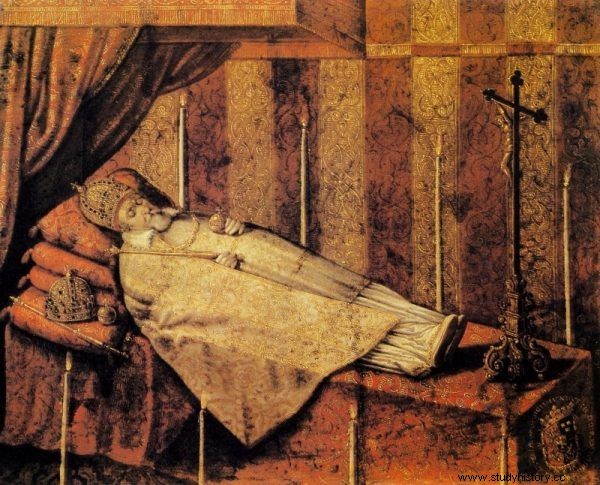This Polish ruler had a difficult time from the moment of his birth. He was born in captivity while his insane uncle kept his parents locked. When he came to Poland to take the throne, he was called the silent devil. And before him there was a life full of pain.
Let's start with the fact that King Zygmnut III Waza was not exactly a Swede. He was invited to the Polish throne as a descendant of the Jagiellonians (his mother was Katarzyna Jagiellonka, and his grandfather was Zygmunt Stary). From an early age, mother puffed and blew on her only child. As Karolina Stojek-Sawicka emphasizes in the book "Plagi Królewskie" , the boy was still sleeping in her bed as a six-year-old boy. When, as a twenty-two-year-old, he came to the Vistula River to sit on the throne, he did not give the impression that this excessive concern had hurt him.
As described by the Italian diplomat quoted by Stefania Ochman-Staniszewska:
He is of a beautiful and well-proportioned body, decent height, fair hair, white face, wide forehead, eagle-like nose, blue eyes and rather big as small, eyes quite majestic, a fair chin with a slightly long mustache, curled upwards and suitable hair on the chin, for the cheeks are cropped, and on the face a bit ruddy, with a good and very healthy temperament and a truly royal appearance.

Wasyl Szujski brought to the presence of Sigismund III. A moment of triumph by the Polish ruler (photo:public domain)
Over the years, the king has demonstrated seriousness, majesty, and great piety. Unlike many of his predecessors, he did not indulge in eating and drinking too much, but the same could not be said of enjoying the charms of the opposite sex. As the king's biographer, Henryk Wisner, writes, the anonymous author of "Dystychy na Sigismund III" sent the king into the arms of hundreds of women, including the steward of the court of Queen Urszula Meierin .
Serious and unexpected ailment
The king's health was excellent for most of his adult life, but in 1612, when he was forty-six, luck turned away from him. As Karolina Stojek-Sawicka writes in the book "Plagi Królewskie" :
During this time, the almost forty-six-year-old ruler was unexpectedly plagued by some serious ailment whose nature was not fully understood, but it must have been something serious since it prevented him from going to Moscow. From then on, the king began to feel more and more unwell.
At that time, the ruler developed a disease that turned his later life into a streak of pain. Over time, she was diagnosed as gout. This ailment, known today as gout, was to accompany him for the rest of his life. Hippocrates wrote about gout already in ancient times, and in later centuries it was called the disease of kings.
Today, you can fight it by regularly taking medications that reduce the amount of uric acid crystals in the blood and painkillers, although patients complain that the pain can be so painful that even touching the bedclothes causes suffering when they go to bed for the night.
Smoking alive is better than pain?
Before these supportive methods were invented, people with more severe gout could turn into infirm cripples within a dozen or so weeks. Zygmunt III, who inherited the genetic predisposition for gout, from his grandfather Zygmunt I Stary and uncle Zygmunt August, fortunately did not suffer from the most severe form of the disease. Nevertheless, pain became his faithful companion. The discomfort was so great that the ruler decided to treat him in a very brutal way. He preferred to burn on gout attacks.
The medics took a metal hammer, made it red hot and treated the king with cauterizers , that is, burning the changed place with red-hot metal. Zygmunt preferred the pain of long-term healing burns to the suffering associated with another gout attack.
However, gout was not the only problem of the Polish king. As the sources indicate, the ruler had problems with the bile ducts, and therefore consumed larger amounts of donkey's milk, considered the best remedy for this disease. Unfortunately, we do not know exactly what kind of ailment the king was suffering from, but usually bile duct problems are associated with pain, vomiting, nausea, weakness, general malaise, hepatic colic, fever or chills.

Cauteries, or the burning of wounds in the 16th century (photo:public domain)
Flu and assassination
In addition, Sigismund III began to fall into severe flu. As if that were not enough, the king's impaired health was damaged by an attempted assassination. On November 15, 1620, Michał Piekarski, a Sandomierz nobleman, tried to kill the 54-year-old ruler. The attacker, inspired by the murder of King Henry IV of France, lurked in the cloisters where Waza was going to the church and attacked him with a Hungarian pickaxe.
Piekarski managed to deal several blows to the king (on the back, shoulder and on the cheek) before the entourage rushed to the rescue. Attacked, Sigismund III collapsed like a debt covered with blood. Although the wounds turned out to be superficial, the very fact of raising his hand to the royal majesty must have affected the mental balance of the monarch, who was no longer a youth then.
As Karolina Stojek-Sawicka emphasizes in the book "Plagi Królewskie" when Zygmunt III Waza turned sixty, he began to lose his strength for good. The real blow that he never recovered from was the death of his second wife. Konstancja Habsburżanka, sister of Zygmunt Anna's first wife, did not win the favor of Poles, but she won her husband's heart.

Graphics by James Gillray depicting a caricature of the pain associated with a gout attack (photo:public domain)
The queen was sick, quite overweight, and felt that her life was approaching. In 1631, despite the weakness, breathlessness and fainting with which she struggled, she took part in the Corpus Christi procession. The day was hot, Konstanz felt even worse. Upon her return, she suffered a stroke and died.
It was a real blow for Zygmunt. Even though his wife had left, he was awakened in the morning by the courtiers and inquired how the queen was doing. Chronicler Paweł Piasecki emphasized that the king was shocked:
It cannot be described in words how King Sigismund was terrified of this death by other measures, unmoved in adversity and always equal in mental stability.

Zygmunt III Waza in the catafalque (photo:public domain)
A personal tragedy affected the health of the ruler. In the fall of 1632, Sigismund was chained to a bedside, and rumors spread around Warsaw that he had died. Later there was a short-term improvement, thanks to which he could participate in the goodbye to Konstanz, but after that he was again brought down by illness. During the feast he indulged in some wine, which resulted in a severe bout of abdominal pain.
The medics decided that he should be given laxatives. When the courtiers came to wake him up, as every morning, they found the ruler paralyzed, probably as a result of a brain hemorrhage. Sigismund III Vasa died for several days, and his limp body was held on the bed, tied with strings. The medics gave him another dose of the mysterious potions. The king's condition did not improve and the ruler died after a few hours, anointing his son Władysław, later known as Władysław IV Vasa, as his successor.
Information sources:
- Ochamn-Staniszewska S., The Vasa Dynasty in Poland , Polish Scientific Publishers PWN 2007.
- Stojek-Sawicka K., Royal plagues. On the health and diseases of Polish kings and princes , Bellona 2018.
- Wisner H., Zygmunt III Waza , School and Pedagogical Publishing House 1984.
